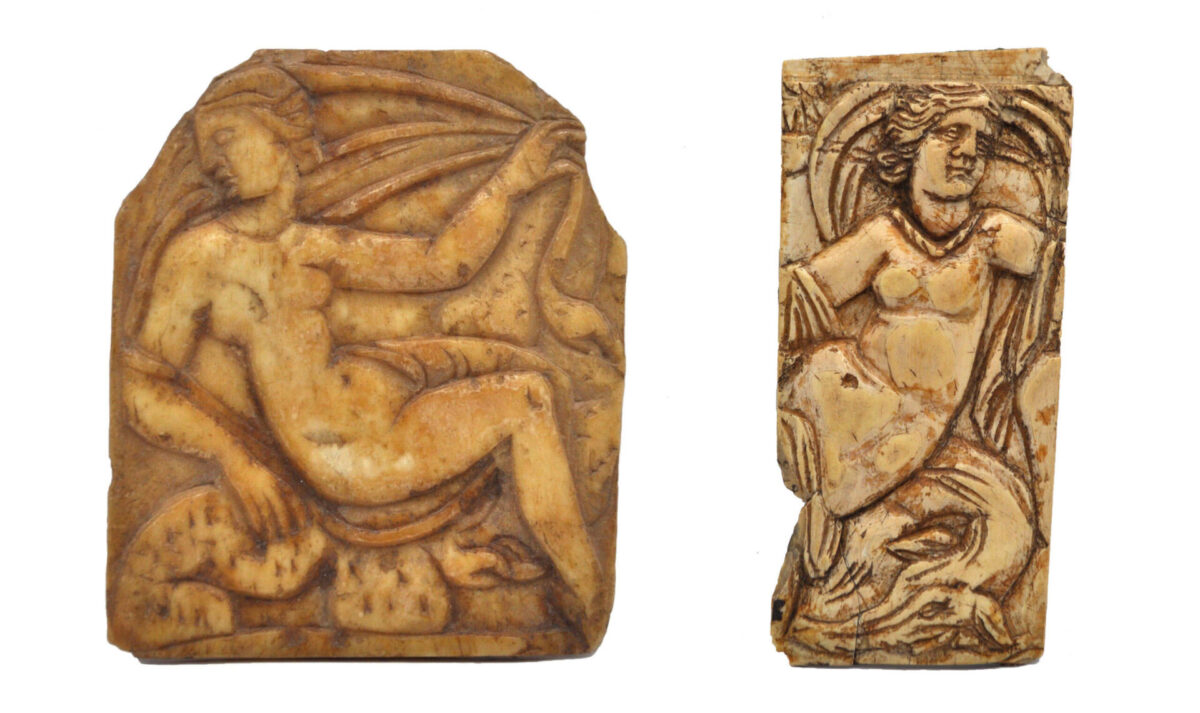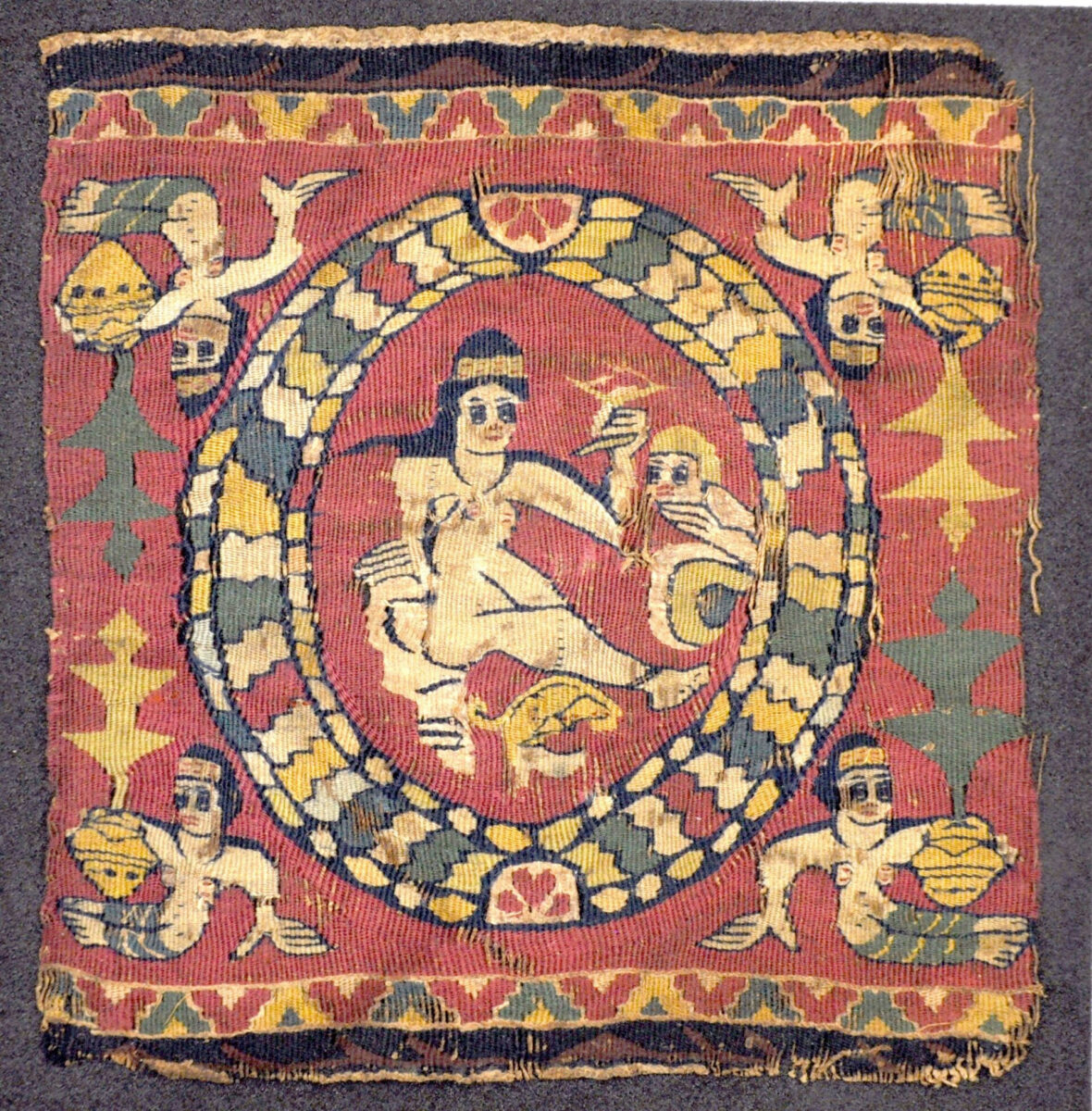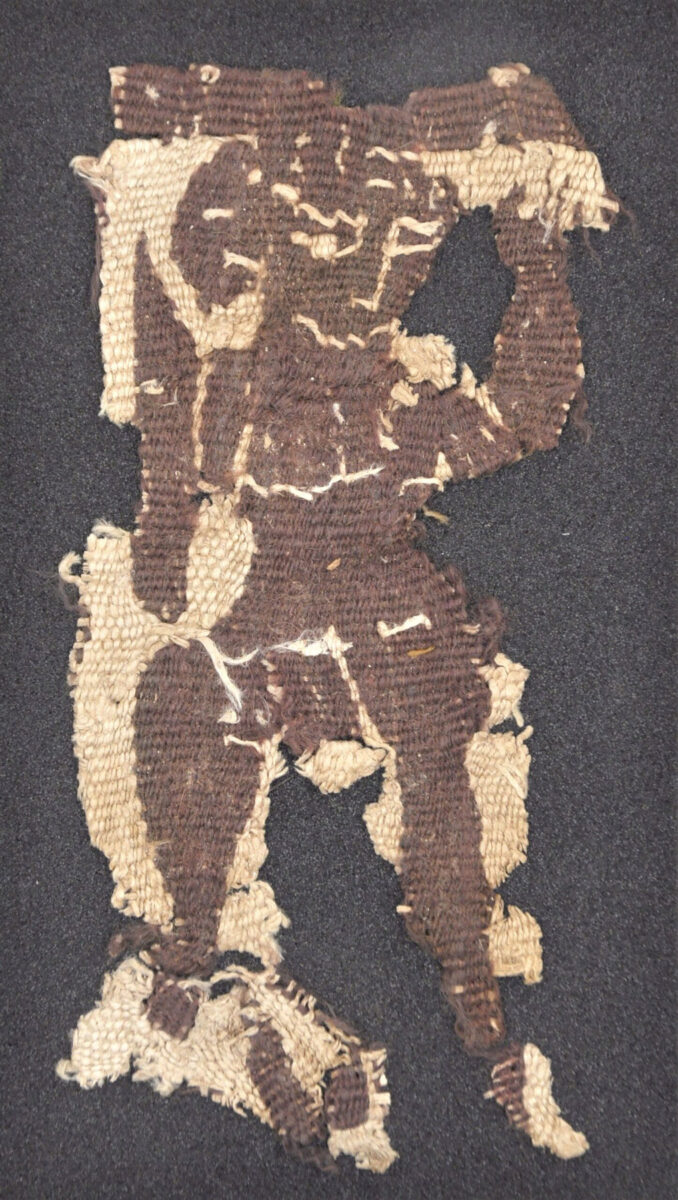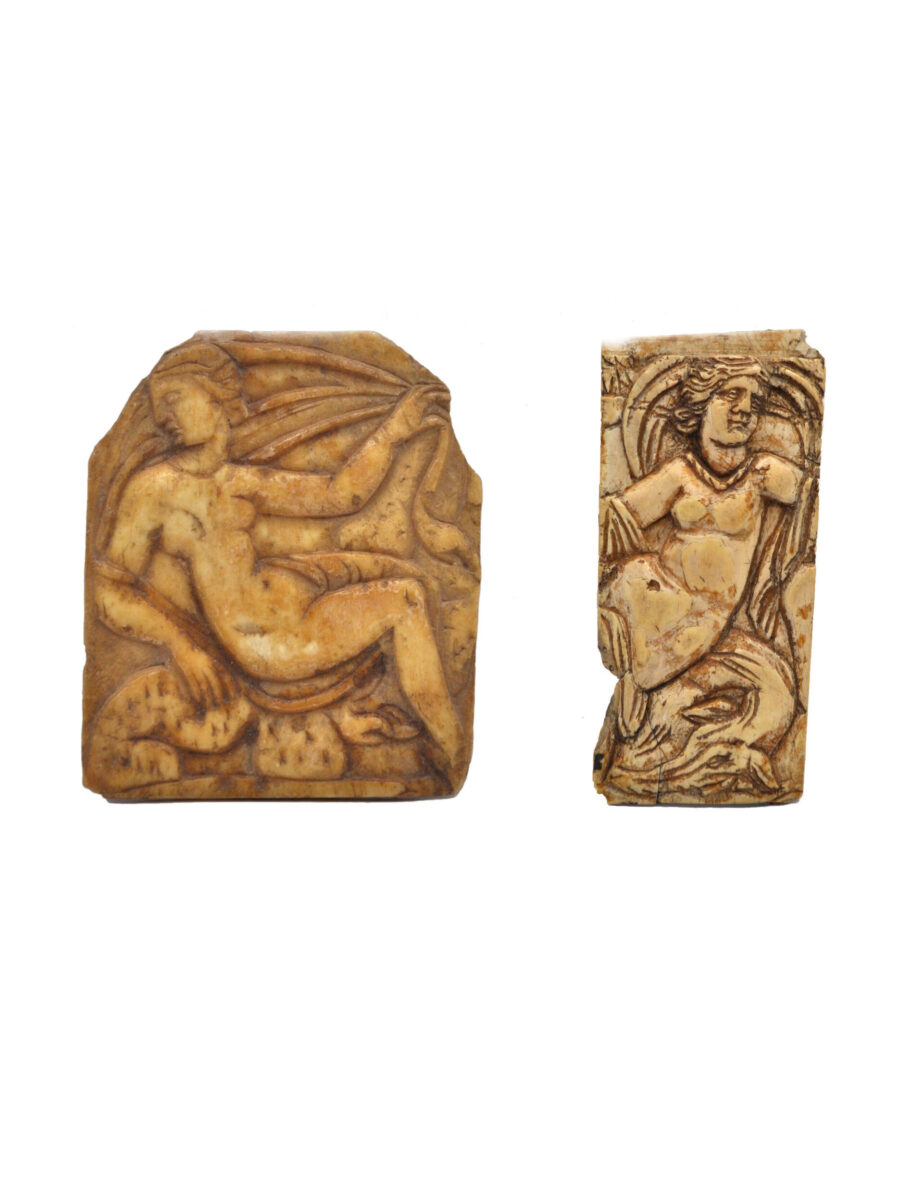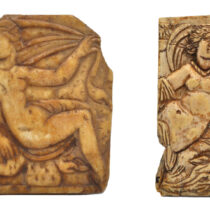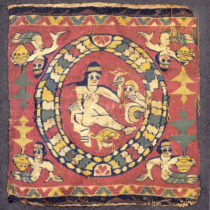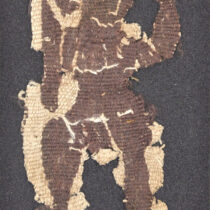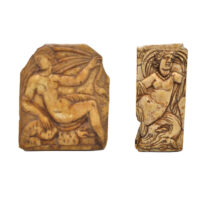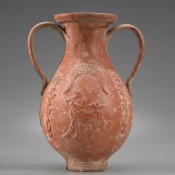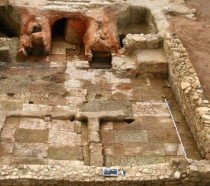The Unseen Museum of the Hellenic National Archaeological Museum presents the “last Aphrodites”.
The Unseen Museum presents “The last Aphrodites”. It is a small exhibition set that includes two ivory carvings and two fragments of Coptic textiles from Egypt of late antiquity. All four artefacts illustrate Aphrodites, Nereids or other mythological figures. The two carvings, dating to the 4th century AD, were destined to decorate bridal jewellery boxes, chests or other precious vessels. The textiles in display, are dated to the period in which Coptic weaving flourished, from the 5th to the 7th century AD. They were sewn on luxurious tunics, draperies or cushions of the early Christians of Egypt.
The Egyptian Collection of the National Archaeological Museum was set up at the end of the 19th century thanks to important donations by individuals, the Archaeological Society at Athens as well as the Egyptian State.
The two ivory carvings come from the Collection of the Greek expatriate, Ioannis Dimitriou, and the two Coptic textile fragments from Alexandra Iliopoulou’s donation.
The Hellenistic and Roman workshops of ancient Egypt were renowned for the production of elaborate ivory carvings, meant for the ornamentation of valuable wood furniture, caskets and other small containers. They illustrate various mythological scenes, the most popular being those of rising or revealing themselves Aphrodites and Nereids among dolphins and sea creatures. Such are the two plaques under cat. no. ΑΙΓ 947 and ΑΙΓ 949, which are dated to the 4th century AD and probably decorated bridal jewellery boxes.
Coptic textiles were mainly made of flax and wool. They have been found for the most part in the tombs of the early Christians of Egypt, sewn onto garments, drapery and cushions. Their rich iconographic repertoire abounds with mythological themes that survived up to the 7th century AD, to be gradually replaced by symbols and representations of Christian thematology. The multi-coloured Coptic textile under cat. no. ΑΙΓ 8381 features, in the tapestry technique, a naked female figure with her entourage: Aphrodite or Nereid, with a young Eros and Nymphs or Nereids, who hold canisters with the Tree of Life. The fragment under cat. no. ΑΙΓ 8385 comes from a composition with separate figures in panels and depicts in a single colour a naked dancer, a Maenad, Dionysus or some other mythological person. The textiles are dated to the period in which Coptic weaving flourished, from the 5th to the 7th century AD. The Aphrodites, the Nereids and the naked figures of the ensemble, belong to a world on its wane, dictated by religious and artistic syncretism.
The “Last Aphrodites” are exhibited in the “Hall of the Altar” (Hall no 34) from Friday 24 May to Monday 19 August 2024.
The Unseen Museum is the well-known exhibition project of the Hellenic National Archaeological Museum that brings to the fore antiquities stored in its vaults away from the visitor’s eyes.
